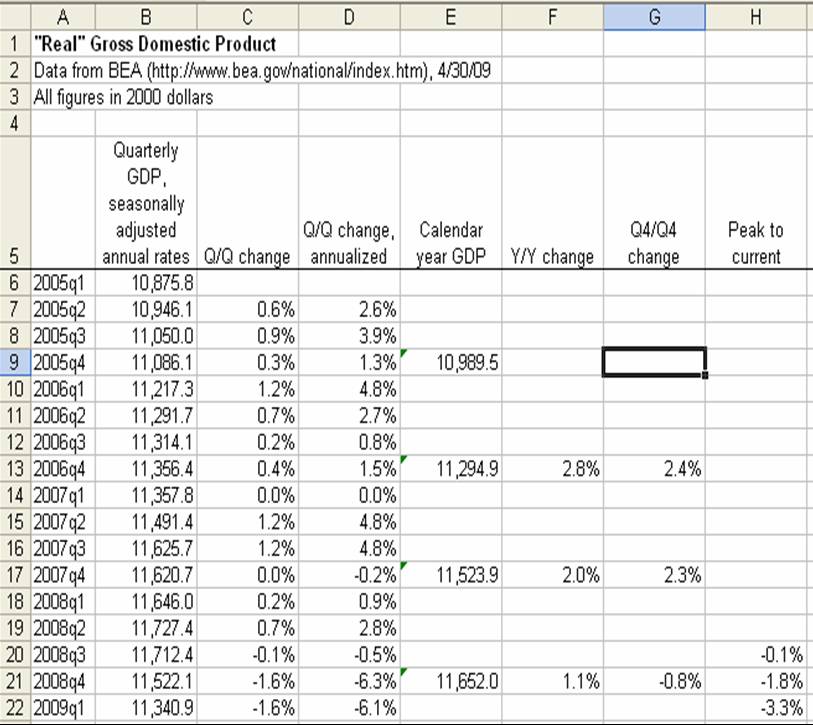I’ve commented earlier that many economic forecasts seem to assume reversion to the mean – here, meaning average economic growth over the last two decades. For a great example, go to the Wall Street Journal and admire the GDP growth rates projected for Q3 2009 through Q2 2010, marching happily up and to the right. (The numbers are 0.6%, 1.8%, 2.3%, and 2.8%.) This recession is different, however, and even if there is a mean to revert to after U.S. households decide how much they want to save, there’s no telling how long it will take.
For one perspective, the Carnegie Endowment for International Peace had a session at the end of April featuring a few IMF economists. Marco Terrones (link to PowerPoint at the bottom of the page) looked at the typical duration of a recession and the ensuing recovery. The duration of recovery is measured to the point at which the economy reaches its previous peak output (the output level when the recession began – December 2007 in our case). He looked at 122 recessions since 1960.
